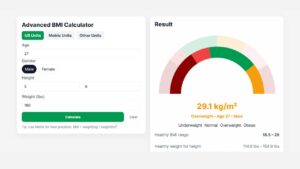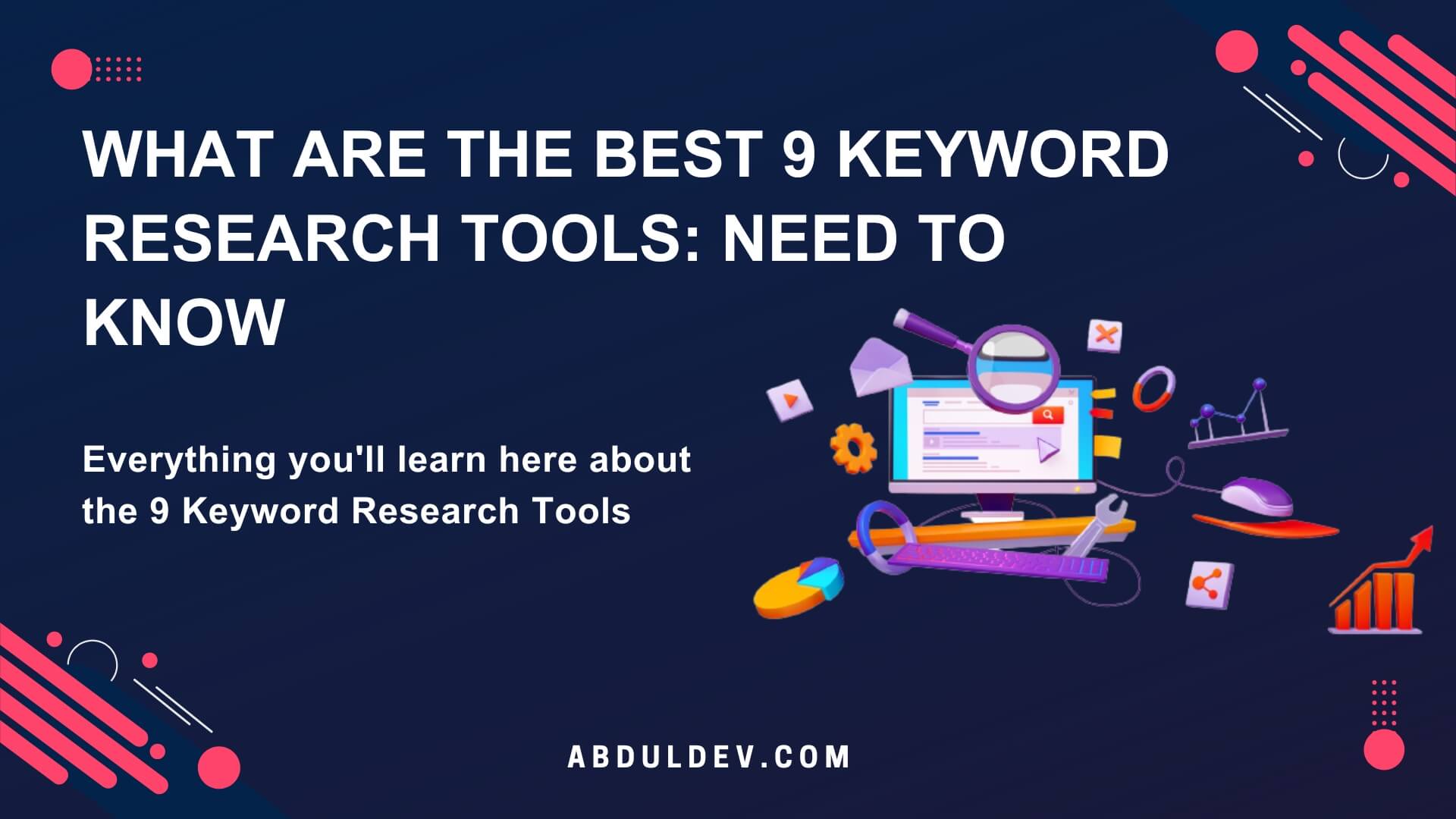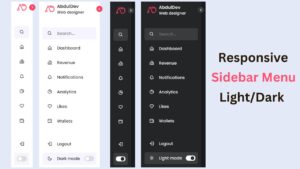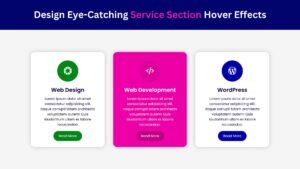
The Importance of Knowing the Different Types of SEO

Graphic design is a dynamic and rewarding career that combines creativity, technology, and storytelling. Whether you dream of crafting compelling logos, designing eye-catching websites, or creating impactful marketing materials, the journey to becoming a graphic designer is as exciting as the field itself. This guide will walk you through the steps to kickstart and excel in your graphic design career.
Understanding SEO
Search Engine Optimization (SEO) is the practice of increasing online visibility and improving the search ranking of websites by optimizing their content and technical structure. It means optimizing your website so search engines like Google can easily find and rank your website higher in search results.
The primary goal of SEO is to attract organic traffic to your website through search queries. SEO is essential to any online marketing strategy and requires using relevant keywords, high-quality content, and technical optimization. To develop an effective SEO strategy, it is necessary to understand the different types of SEO and how they impact online visibility.
There are various types of SEO, each with unique approaches and strategies. It includes on-page SEO, technical SEO, local SEO, mobile SEO, video SEO, and voice search SEO. These types of SEO help businesses optimize their website and attract the right audience.
On-page SEO involves optimizing individual web pages to rank higher in search engine results. It includes optimizing content, title tags, meta descriptions, and relevant keywords.
Technical SEO deals with the technical aspects of website optimization, including site speed, site structure, and URL optimization. Local SEO is critical for businesses targeting customers in a specific location. It involves optimizing content and directories to rank higher in local search results.
Mobile SEO optimizes websites for mobile devices like smartphones and tablets to enhance user experience and search ranking. Video SEO optimizes content on websites and platforms like YouTube to attract organic traffic. Voice search SEO involves optimizing content to match search queries using voice commands on devices like Alexa and Google Home.
Knowing the different types of SEO helps businesses develop a comprehensive SEO strategy that aligns with their target audience. A well-planned SEO strategy that includes relevant keywords, high-quality content, and technical optimization can significantly improve online visibility and search engine ranking.
Moreover, it helps businesses gain a competitive edge and attract organic traffic without keyword stuffing and other unethical practices that can negatively impact search engine ranking. Read more about the SEO guideline for the beginners.
The Different Types of SEO
Search engine optimization (SEO) is a crucial aspect of digital marketing that aims to improve a website’s visibility and organic traffic through search engine results pages (SERPs). SEO strategies continuously evolve, and businesses and website owners can employ various SEO techniques to enhance their online presence. Here are some standard types of SEO:
- On-Page SEO: Optimizes individual web pages to improve search engine rankings. It involves optimizing page titles, meta descriptions, headings, content, images, and URLs. On-page SEO also includes keyword research and optimization, where relevant keywords are strategically placed within the range to help search engines understand the page’s topic and rank it accordingly.
- Off-Page SEO: Off-page SEO refers to activities performed outside of a website to enhance its search engine rankings. It involves building high-quality backlinks from other reputable websites, as search engines consider backlinks a vote of confidence for the website’s content. Off-page SEO includes social media marketing, guest blogging, influencer outreach, and online reputation management.
- Technical SEO: Technical SEO focuses on optimizing the technical aspects of a website to improve its search engine ranking. It ensures that search engine bots can crawl and index the website effectively. Technical SEO elements include website speed optimization, mobile-friendliness, site structure, XML sitemaps, canonical tags, schema markup, and SSL certificate implementation.
- Local SEO: Local SEO is essential for businesses targeting a specific geographical area. It aims to optimize a website’s appearance in local search results when users search for location-specific queries. Local SEO involves optimizing the website’s content with location-based keywords, creating and optimizing Google My Business (GMB) listings, obtaining online reviews, and building local citations.
- E-commerce SEO: E-commerce SEO optimizes online stores to improve their visibility in search engine results. It involves optimizing product descriptions, titles, and images, managing duplicate content issues, enhancing site navigation and user experience, and implementing structured data markup for product information. E-commerce SEO also includes optimizing for long-tail keywords and managing customer reviews.
- Voice Search SEO: With the rise of voice assistants like Siri, Alexa, and Google Assistant, voice search optimization has become crucial. Voice Search SEO involves optimizing content to match the conversational tone of voice queries. It includes using natural language and long-tail keywords, providing concise and direct answers, and ensuring fast-loading mobile pages.
- Video SEO: Video SEO optimizes videos to improve their visibility in search engine results. It involves optimizing video titles, descriptions, and tags, using relevant keywords, and providing transcripts or closed captions. Video SEO also includes promoting videos on social media platforms and embedding them on relevant web pages.
It’s important to note that these types of SEO are not mutually exclusive, and an effective SEO strategy often incorporates multiple approaches. The techniques employed will depend on the nature of the website, its target audience, and the overall marketing goals. By implementing a well-rounded SEO strategy, businesses can enhance their online visibility, attract organic traffic, and ultimately achieve their digital marketing objectives.
On-page SEO

On-page SEO is an essential aspect of search engine optimization, focusing on optimizing individual web pages to improve rankings. The website has undergone many optimizations to make finding and relevant for your target audience easy. Here are some of the key elements and techniques of on-page SEO.
Keyword research and optimization:
On-page SEO starts with keyword research to identify relevant keywords and phrases users search for. These keywords are strategically integrated into web page content, including page titles, headings, subheadings, meta tags, and overall body text. However, search engines value quality and user-centric content, so using keywords naturally and avoiding keyword stuffing is essential. Content optimization: High-quality, informative, and engaging content is vital for on-page SEO. Content optimization involves making sure your content is well-structured, easy to read, and provides value to your audience. This includes using proper headings, bullet points, formatting, and including relevant images and videos. Your content should be unique, match your target keywords, and be updated regularly to keep it fresh and engaging for users and search engines.
Optimizing meta tags:
Meta tags, such as meta titles and meta descriptions, are HTML elements that summarize a web page’s content. Meta tag optimization means using relevant keywords and compelling words to entice users to click through to your webpage from the search engine results page. A well-designed meta description can improve your click-through rate and indirectly affect your search engine rankings.
URL structure:
Creating search engine-friendly URLs is essential for on-page SEO. URLs should be concise and descriptive and include relevant keywords whenever possible. A clear URL structure makes it easier for search engines to understand the content of your page and improves the overall user experience.
Internal link:
Internal links are links to related pages or content within your website. This helps search engines discover and index other pages on your site, establish hierarchy and structure and distribute link fairness. Proper internal linking improves user navigation, increases site dwell time and improves her overall SEO performance.
Image optimization:
Images can improve the visual appeal of web pages, but they also need to be optimized for SEO. This includes using descriptive filenames, adding alt text with relevant keywords, compressing images for faster load times, and ensuring they are mobile-friendly. On-page SEO is a fundamental part of a comprehensive SEO strategy. By implementing these techniques, the website owner can increase the visibility of her website, improve search engine rankings and attract more organic traffic from relevant searches.
Off-page SEO
Off-page SEO refers to efforts outside your website to improve your search engine rankings. This includes strategies that help you build your website’s credibility, authority, and relevance in the eyes of search engines and potential customers. One of the most common and effective off-page SEO tactics is link building, which involves acquiring high-quality backlinks from reputable and relevant websites. These backlinks act as endorsements for your website’s content and can help boost your website’s domain authority, leading to higher search engine rankings.
Other off-page SEO tactics include social media marketing, influencer outreach, brand mentions, guest blogging, and online reviews. By leveraging these tactics, you can increase your website’s visibility and drive more traffic from various sources.
Off-page SEO can be more challenging than on-page SEO since it involves factors outside your control. However, it is just as crucial in helping your website rank higher in search results and attracts more visitors.
By knowing the different off-page SEO tactics and implementing them effectively, you can help your website stand out in a crowded online marketplace and build a solid and lasting online presence.
Technical SEO
While on-page and off-page SEO focus on optimizing content and building links, technical SEO is about improving the website’s infrastructure to make it more user-friendly and search engine-friendly. Technical SEO encompasses many practices, such as website speed optimization, mobile responsiveness, and ensuring the website is crawlable and indexable by search engines.
One of technical SEO’s main goals is to provide a website that is easily accessible and understandable to search engine crawlers. This involves fixing broken links, improving website navigation, and optimizing the website’s URL structure. Technical SEO can also improve website speed by optimizing images and compressing code. Mobile optimization is also a critical aspect of technical SEO, given that mobile traffic accounts for more than half of all website traffic. This involves ensuring the website is mobile responsive, loads quickly and has a design optimized for smaller screens.
In addition to the technical elements of website optimization, technical SEO ensures that the website meets Google’s guidelines and requirements. This includes ensuring the website is secure (HTTPS), has a sitemap, and uses structured data markup to provide additional information about the website’s content to search engines. The benefits of technical SEO are numerous, as a well-optimized website will rank higher in search engine results pages (SERPs) and provide a better user experience.
By making the website more accessible and user-friendly, visitors will be more likely to stay on the website for longer, leading to higher engagement rates and more conversions.
Local SEO
Local SEO is a type of SEO that focuses on improving a business’s visibility in local search results. It is crucial for companies that rely on foot traffic, such as restaurants, retail stores, and service-based businesses, to have a solid local SEO strategy.
The key to effective local SEO is to optimize your business’s online presence for local search queries. This includes optimizing your Google My Business listing, creating location-specific content, and building local citations. Google My Business is a powerful tool that allows you to manage your business’s online presence across Google, including Google Maps, Google Search, and Google+. By optimizing your Google My Business listing, you can increase your visibility in local search results and attract more customers to your business.
Creating location-specific content is another essential element of local SEO. Creating content relevant to your local audience can increase your chances of ranking higher in local search results. This could include blog posts, social media updates, and other content tailored to your local market. Building local citations is also an essential part of local SEO. A source refers to your business’s name, address, and phone number (NAP) on other websites, such as directories, review sites, and social media platforms. By building local citations, you can increase your business’s online visibility and improve your chances of ranking higher in local search results.
Local SEO is crucial to any business’s online marketing strategy. By optimizing your business’s online presence for local search queries, you can attract more customers to your company and increase your revenue. Whether you run a brick-and-mortar store or an online business, it’s essential to understand the importance of local SEO and how to implement it effectively.
E-commerce SEO
In recent years, e-commerce has become a significant aspect of digital marketing, and as a result, e-commerce SEO has become increasingly vital for online businesses. E-commerce SEO is a technique for optimizing e-commerce websites for better visibility on search engine result pages.
This process involves optimizing various on-page and off-page elements to make it easy for search engines to crawl and rank e-commerce sites. Some crucial aspects of e-commerce SEO include product titles, descriptions, meta tags, images, and product categorization. With e-commerce SEO, you can attract relevant traffic, increase brand awareness, and generate more revenue by improving the visibility and ranking of your website.
It is important to note that e-commerce SEO is a long-term process and requires patience, hard work, and constant optimization to achieve desired results. One crucial factor to consider when optimizing an e-commerce website for SEO is user experience. This involves ensuring the website is user-friendly and easy to navigate, with clear product descriptions, pricing, and shipping information. Customers should be able to find what they need quickly, add items to their cart easily, and complete the checkout process without any difficulties.
Another essential element of e-commerce SEO is link building, which involves building backlinks from high-authority websites to your e-commerce site. This helps to boost your website’s authority and trust, ultimately leading to improved search engine ranking.
In summary, e-commerce SEO is an essential aspect of online marketing that can help businesses gain visibility and attract potential customers to their websites. By optimizing your e-commerce website for SEO, you can increase brand awareness, improve website traffic, and generate more revenue for your business.
Voice Search SEO
In recent years, voice search has become increasingly popular among internet users. According to a report by Google, over 27% of the global online population is already using voice search on mobile devices. This trend will continue with the rise of smart speakers like Amazon’s Alexa and Google Home.
This is where voice search SEO comes in. Voice search optimization involves optimizing your website content to match the conversational tone of voice search queries. As voice search typically involves long-tail keywords and natural language queries, the content on your website needs to be more casual, answering questions in a simple, easy-to-understand manner.
For instance, a traditional Google search might involve the user typing in “best coffee shops in Seattle,” but a voice search would be more likely to affect a question such as “What are the best coffee shops in Seattle?” As a result, optimizing your website for voice search means incorporating long-tail keywords and natural language queries in your content.
One key consideration for voice search SEO is the importance of local search. According to research by BrightLocal, over 70% of smart speaker owners use their devices to find local businesses, highlighting the importance of local SEO in optimizing for voice search.
In addition, optimizing your website for voice search can involve making sure your website is mobile-friendly, as voice search queries are often conducted on mobile devices. This means ensuring your website is optimized for fast loading times and easy navigation.
Overall, incorporating voice search SEO into your overall SEO strategy is becoming increasingly important as the trend toward voice search continues. By optimizing your website content for the conversational tone of voice search queries, you can increase your chances of ranking well in voice search results and driving traffic to your website.
Video SEO
Video SEO is a relatively new and rapidly growing field within search engine optimization. As the use of video content continues to grow across the internet, it is becoming increasingly crucial for businesses to optimize their video content for search engines.
Video SEO involves a range of techniques designed to improve the visibility of your video content in search results. This can include optimizing your video’s metadata, such as the title, description, and tags, and creating high-quality, engaging video content that encourages viewers to watch and share.
One of the key benefits of video SEO is that it allows you to tap into the massive potential of YouTube, the world’s second-largest search engine after Google. By optimizing your videos for YouTube search, you can reach a vast audience and drive significant traffic to your website.
In addition to YouTube, video content is becoming increasingly important on other social media platforms, such as Facebook and Instagram. By optimizing your videos for these platforms, you can improve their visibility and engagement, which can lead to increased brand awareness, website traffic, and sales. To get started with video SEO, it’s essential to clearly understand your target audience and their preferences for video content. This will help you create content that is more likely to resonate with your audience and encourage them to engage with your brand.
Overall, video SEO is an essential part of any modern digital marketing strategy. By optimizing your video content for search engines and social media platforms, you can tap into a massive and growing audience, drive traffic to your website, and, ultimately, grow your business.
Benefits of Knowing the Different Types of SEO
Now that we’ve discussed the different types of SEO, it’s essential to understand the benefits of knowing them. Let’s take a closer look at the advantages:
- Improved Search Rankings: By knowing the different types of SEO, you can ensure that your website is optimized for each class. This means you’ll have a higher chance of appearing in the top search results, ultimately increasing your visibility and driving more traffic to your site.
- Targeted Marketing Strategies: Each type of SEO has its unique characteristics and techniques. Knowing them allows you to tailor your marketing strategies to suit and reach your target audience more effectively. This will save you time and money and increase your ROI.
- Better User Experience: Optimizing your website for different types of SEO also means improving your user experience. By implementing on-page SEO techniques such as optimizing page speed and structure, users will have a better experience navigating your website. This leads to increased engagement and better chances of converting leads into customers.
- Competitive Edge: SEO is essential to any business’s marketing strategy in today’s digital world. Knowing the different types of SEO can give you a competitive edge by helping you stay ahead of your competitors and reach your target audience more effectively.
Conclusion
In the ever-evolving world of digital marketing, knowing the different types of SEO is not just beneficial — it’s essential. By leveraging these strategies, you can boost your website’s performance, enhance user experience, and achieve your goals. Invest time in learning and implementing these SEO practices, and watch your online presence thrive.
Read more about the best 9 keyword research tools.
FAQs
Understanding the different types of SEO helps you develop a well-rounded and effective digital marketing strategy. Each class targets specific areas of optimization, allowing you to tailor your approach based on your goals and target audience.
By understanding the different types of SEO, you can optimize your website in multiple ways, enhancing its visibility and organic traffic. This knowledge allows you to implement strategies aligning with search engine algorithms and user preferences, leading to improved rankings and website visibility.
Absolutely! Other types of SEO, such as local SEO or voice search SEO, focus on specific aspects that help you connect with your target audience more effectively. By understanding these types, you can optimize your website to appear in location-based searches or address the growing use of voice assistants.
On-page SEO optimizes individual web pages by incorporating relevant keywords, creating quality content, and improving user experience. It helps search engines understand your content and ranks it higher in search results, ultimately attracting organic traffic to your website.
Off-page SEO activities, such as building high-quality backlinks, engaging with social media, and managing online reputation, establish your website’s authority and credibility. These efforts improve search engine rankings, drive more referral traffic, and enhance your online presence.
Share on Social Media
Related Articles

7 Best Free SEO Plugins for WordPress in 2025
Boost your WordPress site’s search rankings with these 7 free SEO plugins. Discover the best tools to optimize your content,

9 Benefits of Using Professional Keyword Research Services
Looking for professional keyword research services? I will help you identify your business’s most relevant and profitable keywords. Let us

What Are The Best 9 Keyword Research Tools: Need to Know
Finding the right keywords is essential for any successful SEO strategy. Discover the best keyword research tools to help you















